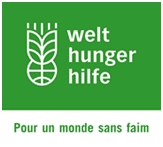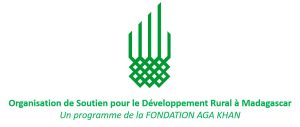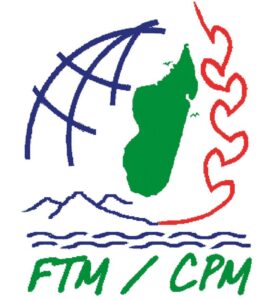Il y a 10 fichiers, taille totale 19,7 MiB avec 11 250 documents consultés.
De 1 à 7 sur 10 fichiers.
Rapports - Projet Manitatra
 Final report MANITATRA
Final report MANITATRA
» 4,1 MiB - 1 170 consulté(s) - 6 septembre 2016Il s'agit du rapport final du projet MANITATRA, projet pilote sur financement du COMESA
 Rapport finale d'évaluation externe du projet MANITATRA
Rapport finale d'évaluation externe du projet MANITATRA
» 1,1 MiB - 1 460 consulté(s) - 6 septembre 2016Il s'agit du rapport d'évaluation finale externe du projet pilote MANITATRA dans la Région Sud-Est de Madagascar et Moyen Ouest du Vakinankaratra - Cabinet IDACC
 Rapport évaluation projet MANITATRA - Région Sud Est de Madagascar
Rapport évaluation projet MANITATRA - Région Sud Est de Madagascar
» 2,0 MiB - 1 368 consulté(s) - 6 septembre 2016Il s'agit du rapport d'évaluation du projet MANITATRA dans la région du Sud Est de Madagascar
 Rapport évaluation projet MANITATRA - Région Moyen Ouest
Rapport évaluation projet MANITATRA - Région Moyen Ouest
» 2,0 MiB - 1 354 consulté(s) - 6 septembre 2016Il s'agit du rapport d'évaluation du projet MANITATRA dans le Moyen Ouest du Vakinankaratra
 Progress report July to September 2015
Progress report July to September 2015
» 1,7 MiB - 1 031 consulté(s) - 27 octobre 2015Most of project targets were achieved but the most outstanding results data concerns the achievements on some best practices like lombricompost and use of bio-pesticides added to compost which innovations were brought by the Manitatra project. Also, the high dissemination of yellow flesh sweet potatoes among women farmers in the food insecure region of the South East is worth noting as well as the use of farm manure which is a breakthrough in extension work because farm manure still remains a taboo among some tribes of this region (the Zafisoro tribes).
 Progress report April to June 2015
Progress report April to June 2015
» 435,6 KiB - 843 consulté(s) - 27 juillet 2015The main objective of the MANITATRA project is to support up scaling of CSA in Madagascar in order to mitigate climate change and to improved food security. It is implemented in two regions of the Country with two different challenges: (i)the Mid-West of the Vakinankaratra area from 800 to 1100 m above sea level, having limited paddy fields, but high potential for upland crop productions although being subject to erratic rainfall and striga prone areas; (ii)the South East of Madagascar, one of the most vulnerable region to climate change (floods, erosion, but also drought from time to time) and used to be one of the most populated area of Madagascar and where population are the most vulnerable to food insecurity.In the two regions and in the MidWest in particular, recurrent bush firings and cattle free grazing are among the sources of land degradation causing spectacular gulley erosion and siltation in the lowlands. Also, uncontrolled cattle grazing are not in favor of biomass conservation and crop residues for a good CA. Target beneficiaries in the Mid-West are estimated to 1000 small scale and medium farmers of which 200 are women, mostly, single women head of farm or local women association. By the end of this 3rd quarter, total beneficiaries of the Manitatra project in the Mid-West is 3232 farmers (323% of the target) of which 20% are women. Target beneficiaries in the South East are estimated to 1400 food insecure small scale farmers of which 900 are women, mostly single women head of farm or local women association. By the end of these 3rd quarter, total beneficiaries of the project in the Southeast is 2476 farmers (177% of the target) of which 52% are women. The trainings on vegetable crops and on orange flesh sweetpotatoes increased significantly the number of women reached by the MANITATRA project.
 Rapport atelier "Journées Agroécologiques du Moyen Ouest" 26 et 27 mars 2015
Rapport atelier "Journées Agroécologiques du Moyen Ouest" 26 et 27 mars 2015
» 3,2 MiB - 1 194 consulté(s) - 12 mai 2015Il s'agit du compte rendu complet de la journée de l'agroécologie organisée dans la région de Vakinankaratra le 26 mars et de l'atelier de restitution du 27 mars à Antsirabe. Cet atelier a été honoré par la présence de Monsieur le Ministre de l'Agriculture, des représentants des autres ministères, des partenaires techniques et financiers, et de la délégation du COMESA
















